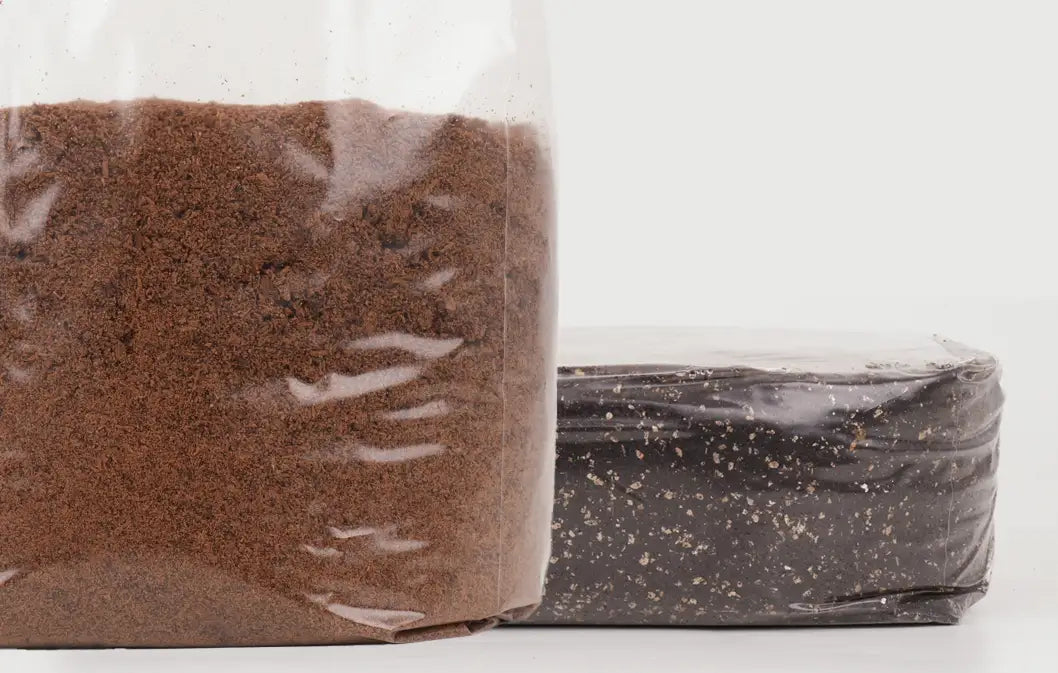
MycoPunks Pasteurised Mushroom Substrate
Which substrate do I need?
| Psilocybe (Where legal) | Hericium (Lions Mane etc) | Pleurotus (Oyster) | Lentinula (Shiitake) | Ganoderma (Reishi) | Grifola (Hen of the woods) | Flammulina (Enoki) | |
|---|---|---|---|---|---|---|---|
| CVG Substrate | Very Good (Optimal) |
OK (Sub optimal) |
OK (Sub optimal) |
OK (Sub optimal) |
OK (Sub optimal) |
OK (Sub optimal) |
OK (Sub optimal) |
| Rise Above (Oak / Bran) | No |
Very Good (Optimal) |
Very Good (Optimal) |
Very Good (Optimal) |
Very Good (Optimal) |
Very Good (Optimal) |
Very Good (Optimal) |
What do you get?
Included:
- A bag of your chosen substrate.
- Sticker with every order.
Not Included:
- Sterile Grain
- Gourmet Liquid Culture (LC) or Multi Spore Syringe (MSS)
Adding Grain To Substrate
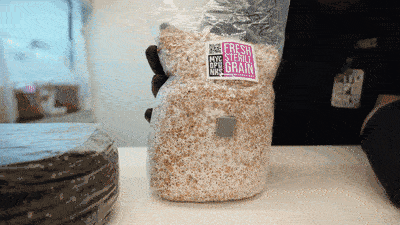
Step 1: Break up your mycelium
Again... carefully (don't damage the bag) but firmly break up the colonised grains until they are all separate, then shake the bag up to mix it all together.

Step 2: Open your grain bag
Cut the top off your grain bag. As long as everything was fully colonised contamination won't be an issue - the mycelium has hogged all the nutrients.
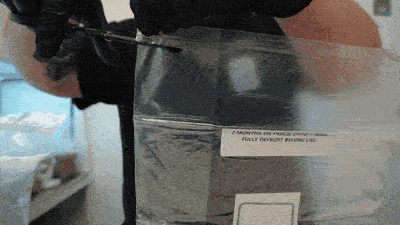
Step 3: Open your substrate
Cut off the top of your substrate bag, trying to keep the cut level with the seal.

How much grain spawn to add?
CVG substrate : 2:1 Ratio (E.g. 1kg to 2kg)
Gourmet Wood Substrate : 5:1 (or less) Ratio (800g to 4kg substrate)

Step 4: Add spawn to sub
Pour your grain spawn into your substrate bag. Try not to spill it everywhere.
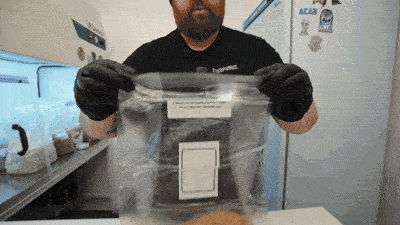
Step 5: Prepare for shake
Fold down your bag three times and then fold in on itself to prevent spillage during the shake.

Step 6: Thoroughly mix
Mix the living SHIT out of the grain spawn and substrate. The better mixed the quicker the last stage of the process.
Top Fruiting Method
Used for King Oysters | Pioppino | Reishi | Enoki | Maitake | Psilocybe (If legal in your country)

Step 7: Paperclips
Fold down the bag once and use paper clips to lightly seal the bag.
Your substrate bag might have the new long horizontal white filter.

Step 8: Elastic Band (If top fruiting)
Stretch the elastic band over your bag around 1-2 inches below the surface of the substrate. This discourages mushrooms from growing on the sides of the bag.

Step 9: Tamp me, daddy
Gently flatten out the substrate surface using your hands (outside of the bag) to maximise the surface area available for mushroom growth.

Step 10: Back into incubation
Now we wait until the substrate is fully colonised.
This stage takes around 3-4 days if you mixed your bag very well.
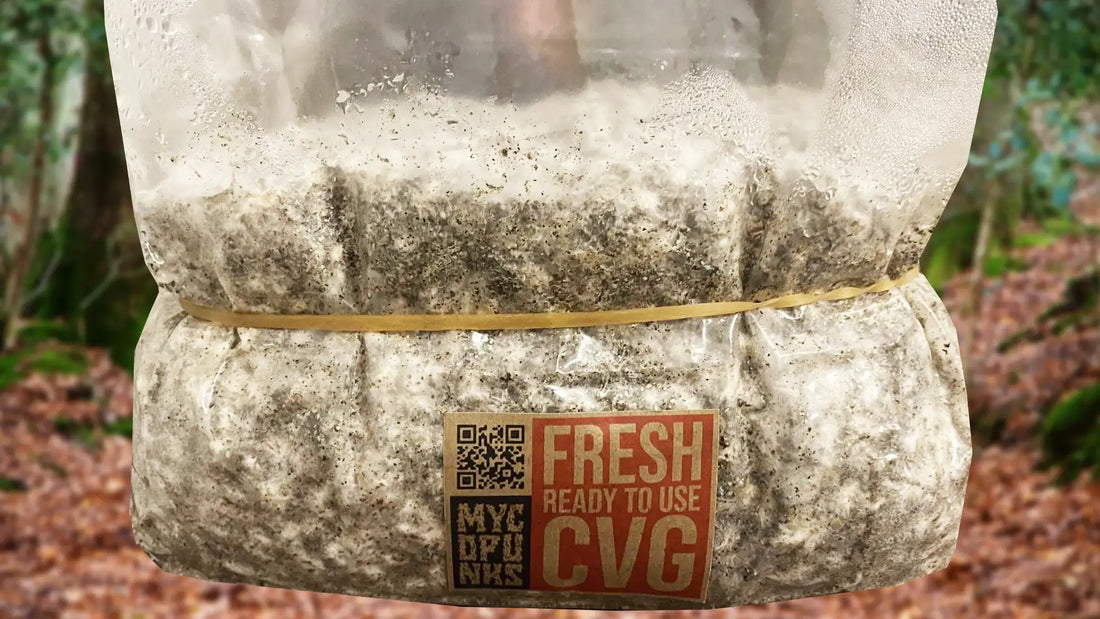
Ready for fruiting!
When your substrate has fully colonised we are ready to initiate fruiting of the mushrooms!
Keep your bag fully extended upright with the paper clips on with the white filter patch free of obstructions.
This stage is just about maintaining good environmental conditions inside the bag.

Step 11: Fruiting Conditions
Bring your bag out in to indirect light (on a shelf is fine).
Room temperature is fine in the UK & Europe during mild months.
Once per day open the bag to introduce fresh air.
There should be condensation on the inside of the bag, if it's dry in the mornings mist the inside of the bag with some water.
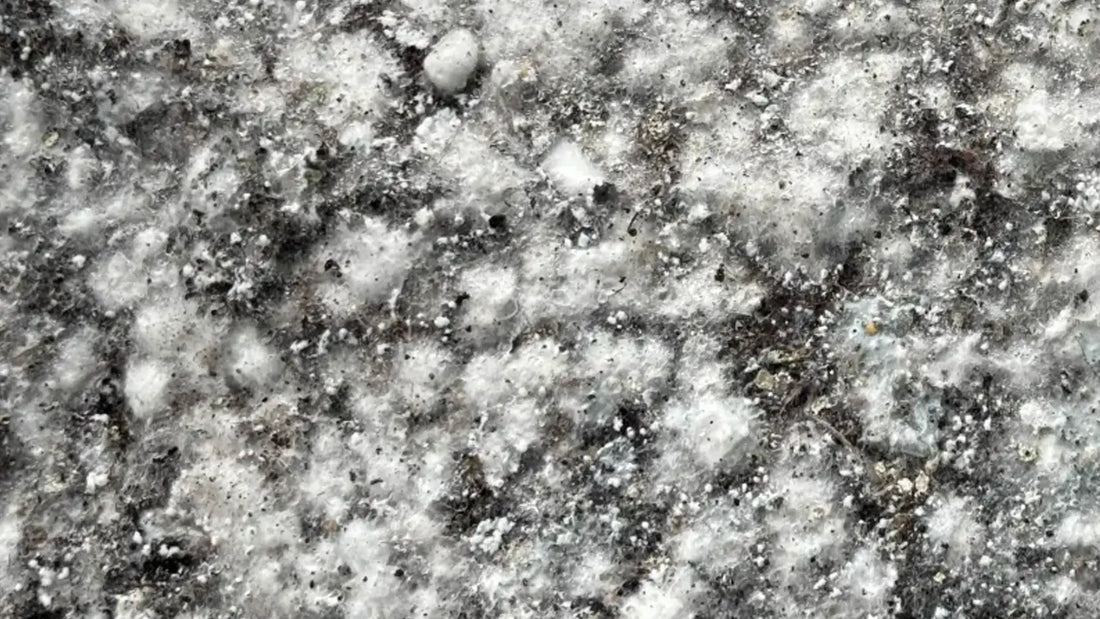
Step 12: Surface Conditions
Photo above shows nice conditions for therapeutic mushrooms.
The little white dots are called hyphal knots, these will change into little mushroom primordia and then into mushrooms.
Once you see the hyphal knots, in around a week you should see mushrooms growing, they'll start off small but very rapidly increase in size if all is well.

Check out these king oysters one of our customers grew!
Need support along the way?
Things don't always look exactly as expected, if you want some advice or second opinions on anything at all, you can get help from our team and the community!


